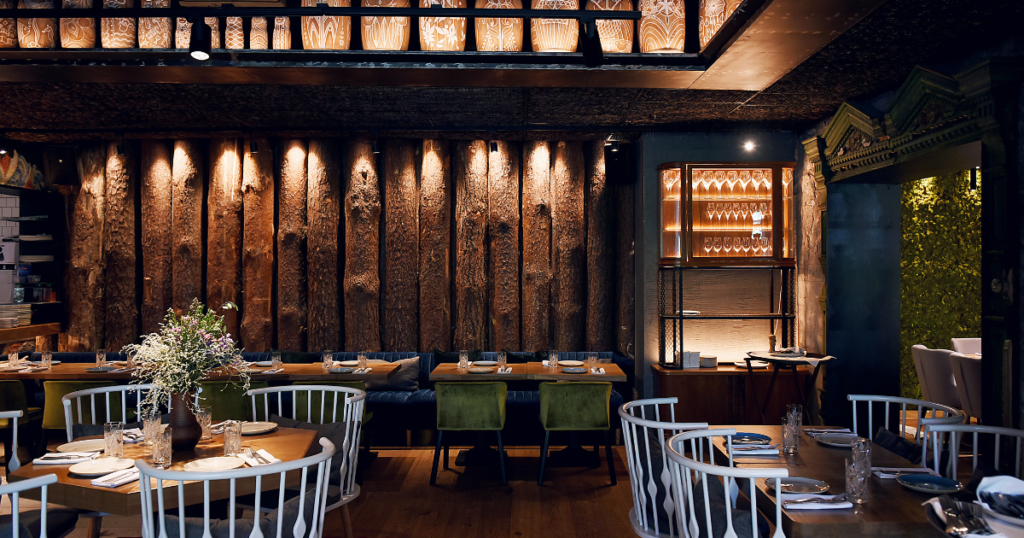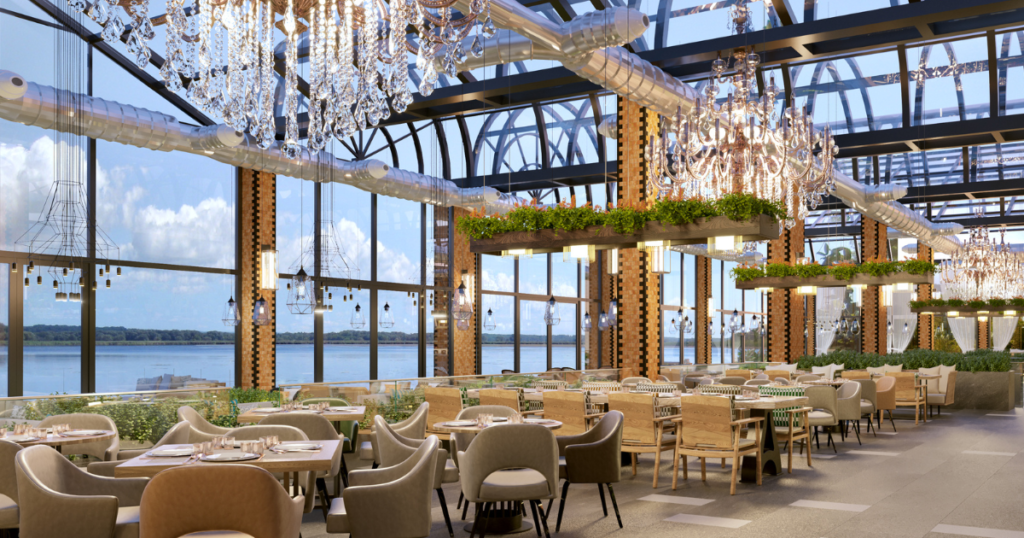Ever walked into a restaurant and immediately felt at ease, as if the space was designed just for you? Restaurant design is no more about just the aesthetics—it’s about creating an environment that resonates deeply with our psychological needs and enhances our dining experience- that’s where restaurant design and planning come in handy. But what makes a restaurant’s design truly exceptional? Is it the plush seating, the perfect lighting, or something more?
Restaurant designs are now prioritizing comfort and unique experiences. We get to see spaces that blend nature with dining, like indoor gardens or walls covered in living plants. Flexible layouts will allow for various dining styles, from private booths to communal tables. Advanced lighting and acoustics will create the perfect atmosphere for any occasion. Additionally, interactive elements and immersive decor will make dining out more engaging and enjoyable. Overall, restaurant design and planning will focus on enhancing the dining experience through creativity and comfort.
In this exploration of restaurant design trends, we’ll delve into how the latest innovations are transforming dining spaces to meet the evolving preferences of modern patrons. From fostering social connections to engaging all our senses, these trends reflect a deeper understanding of how design impacts our dining experience.

1. Cultural Crossovers
Blending diverse cultural elements in restaurant design is becoming a prominent trend. Restaurants are mixing various cultural influences in their decor, cuisine, and ambience to create unique, immersive experiences. For instance, modern eateries might combine traditional Japanese aesthetics with Mediterranean cuisine, offering a fusion that celebrates global influences. This cultural crossover not only enriches the dining experience but also reflects the vibrant diversity of contemporary society.
2. Creating Social Spaces
Ever felt that a restaurant’s layout can make or break a social gathering? Today’s dining spaces are designed to facilitate both intimate dinners and lively conversations. Take The Commons in New York, for example. It offers a mix of private booths and expansive communal tables that encourage interaction among guests. This thoughtful design fosters a sense of community, turning a simple meal into a memorable social event.

3. Incorporating Personalization
In an age where individual preferences reign supreme, personalization in restaurant design is more important than ever. Imagine dining at a place where the decor and dining experience are tailored to your tastes and cultural background. Restaurant like Eataly in New York excels in this by featuring open kitchens and interactive food stations, allowing diners to engage directly with the food preparation process. This interactive approach makes each dining experience uniquely personal, catering to individual tastes and preferences.
4. Enhancing the Dining Experience with Sensory Stimulation
What if a meal could engage all your senses, making the experience unforgettable? Sensory stimulation through color, texture, and sound can elevate dining from mere eating to an immersive adventure. Alinea in Chicago exemplifies this with its innovative use of sensory elements. The restaurant’s dynamic presentations and surprising textures create a multi-sensory journey that makes each visit a unique and memorable experience.
5. Creating Urban Oases
In the midst of bustling city life, restaurants are increasingly becoming peaceful retreats. Think of spaces that incorporate lush greenery, serene water features, and calming design elements. For example, restaurants are using indoor gardens and soothing water elements to transform their interiors into relaxing sanctuaries. This trend focuses on providing diners with a tranquil escape from the urban hustle, creating an environment where they can unwind and rejuvenate.

Conclusion
As we move into 2024, understanding the psychology of space will be crucial in restaurant design. By focusing on comfort, fostering social connections, incorporating personalization, engaging the senses, and embracing flexibility, restaurants can create environments that deeply resonate with diners. These trends are not just about keeping up with the latest styles—they’re about restaurant design and planning, creating dining experiences that are enjoyable, memorable, and perfectly attuned to our needs.
By grasping these evolving trends, you’ll be ahead of the curve, whether you’re designing a new restaurant or simply enjoying a dining experience. Dive into these insights and discover how the future of restaurant design is shaping the way we eat, socialize, and feel.y